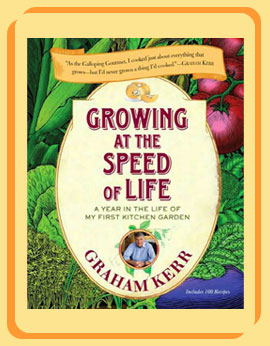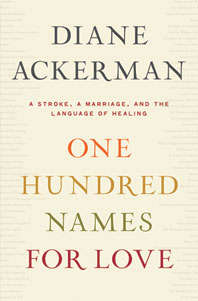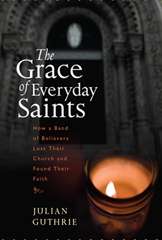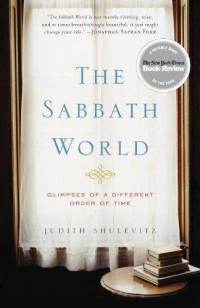The evening is cool, the moon bright, and the crickets lovely, not as annoying as the usual screech of the cicadas these mid-summer nights. It is such a nice night out, I long to get my little lamp and sit outside with a cold beer and a good book. But yet, I want to be in touch with our cadre of Hearts & Minds readers—would love to do some “book talk.” I wonder what others are reading? What is enjoyable and what is edifying? (I learn a lot from facebook and twitter about the habits of our fans) and am always delighted to see the orders that come in from across the land. We got some good replies about my Larry Woiwode piece—the Words Made Fresh review, but few orders. It is serious literature, I realize, so maybe isn’t widely appealing, but it is an important book. As we said, we are thrilled to see this caliber of thoughtful work from within a seriously Christian worldview. Hats off to Crossway for releasing the collected essays of such a substantive thinker, author and critic.
Here are some books that we have wanted to tell you about but they just haven’t matched any of the previous columns. So, we offer a miscellany of six wonderfully written, very thoughtful, and fully lovely books. A surprising mix, all but one by my bed-stand as I work through them all as the mood fits. These are each exquisite volumes and they seem right for a night like this.
 The Last American Man Elizabeth Gilbert (Penguin) $15.00 I have admitted often that we loved Eat Pray Love, and while we obviously have a different understanding of truth, God, the faith experience, and romance, we adored this wise and often hilarious travelogue. Even her section about the Ashram was beautifully rendered. How would you narrate your encounter with the sublime, the Divine? Well, that fun book led us to Committed, her history and sociology of marriage, written very much as a sequel to EPL, telling of her reluctance to marry the man she met and feel in love with in Bali. Despite some opinions that seem wrong-headed, it was a nearly brilliant book, and Beth and I both devoured it. On a roll, then, I took up her first book, The Last American Man and Beth immediately followed suit (since I wouldn’t shut up talking about it every night) and I cannot even tell you how this book rocked our world! We both zipped through it, laughing and rubbing our foreheads and shaking our heads and staying up late, awestruck. Beth loaned it to a friend before I could; it is that kind of book.
The Last American Man Elizabeth Gilbert (Penguin) $15.00 I have admitted often that we loved Eat Pray Love, and while we obviously have a different understanding of truth, God, the faith experience, and romance, we adored this wise and often hilarious travelogue. Even her section about the Ashram was beautifully rendered. How would you narrate your encounter with the sublime, the Divine? Well, that fun book led us to Committed, her history and sociology of marriage, written very much as a sequel to EPL, telling of her reluctance to marry the man she met and feel in love with in Bali. Despite some opinions that seem wrong-headed, it was a nearly brilliant book, and Beth and I both devoured it. On a roll, then, I took up her first book, The Last American Man and Beth immediately followed suit (since I wouldn’t shut up talking about it every night) and I cannot even tell you how this book rocked our world! We both zipped through it, laughing and rubbing our foreheads and shaking our heads and staying up late, awestruck. Beth loaned it to a friend before I could; it is that kind of book.
A long and very colorfully story short, it is the biography of a lad from the early 70s raised by a super-strict, nearly abusive father who ends up living in a teepee, knowing the ways of Native customs the world over and thereby living a “back to nature” ideology that stood as a firm rebuke to the materialism and superficiality and alienation of American culture. This fellow–Eustace Conway from North Carolina–is a natural outdoorsman, woodsman, hunter, self-taught carpenter, a born storyteller, a manic visionary who builds his own homestead, starts a nature center for guests that flock to him in nearly cult-like passion, becomes one of the finest horsemen in America, and longs to be happy with a hippy-chick Earth Mother, pioneer woman wife, a hope that for reasons that become clear, ain’t gonna happen any time soon. Alas, he’s a troubled soul, gifted, rugged, stubborn, a Dreamer Like No Other, tenacious, hardworking, and not a little bit magnetic.
super-strict, nearly abusive father who ends up living in a teepee, knowing the ways of Native customs the world over and thereby living a “back to nature” ideology that stood as a firm rebuke to the materialism and superficiality and alienation of American culture. This fellow–Eustace Conway from North Carolina–is a natural outdoorsman, woodsman, hunter, self-taught carpenter, a born storyteller, a manic visionary who builds his own homestead, starts a nature center for guests that flock to him in nearly cult-like passion, becomes one of the finest horsemen in America, and longs to be happy with a hippy-chick Earth Mother, pioneer woman wife, a hope that for reasons that become clear, ain’t gonna happen any time soon. Alas, he’s a troubled soul, gifted, rugged, stubborn, a Dreamer Like No Other, tenacious, hardworking, and not a little bit magnetic.
As is her style, Gilbert makes us laugh, can swear like a sailor, and tells this amazing tale in clever prose and in ways that offer insight, compassion and more balance than most could conjure up in the face of such a story. She realizes, it seems, that there is something deeply religious about our human quests, and to better understand them, we must know a bit about history, sociology, culture, zeitgeists past and present. She is helpful ruminating on the American frontier and how that rugged individualism shaped our identities, from cowboy towns to utopian communities to contemporary wilderness sporting. This is a wide-ranging book, years in the making, reporting intimately on this whole remarkable (and remarkably dysfunctional) family of Eustace Conway, his genealogy, his famous grandfather, various relatives, former friends and bitter enemies, all as a canvas to draw some interesting conclusions about American history, masculinity, our relationship to the environment and how in the world to be happy in a world gone dumb. One of the most interesting books I have read in years!
Here is the long GQ article that became Gilbert’s book. Hold on tight and if you find it as interesting we I did, despite the crass language, order it from us. Fair enough?
 Growing at the Speed of Life: A Year in the Life of My First Kitchen Garden Graham Kerr (Perigree) $27.00 Speaking of characters, Graham Kerr was in many ways a caricature of much of what Eustace Conway despised. He was tony, un-serious, wasteful, on TV. Those who grew up when I did knew him as the Galloping Gourmet, the predecessor of all those characters now on the Food Channel, brilliant, British and way too giddy. Except he drank and drank as he showed his gourmet dishes, turned into an on-air alcoholic. During those years he was mockingly awarded the “Broken Wooden Spoon” by Weight Watchers International, who called him Public Enemy Number 1 because of his bad culinary choices.
Growing at the Speed of Life: A Year in the Life of My First Kitchen Garden Graham Kerr (Perigree) $27.00 Speaking of characters, Graham Kerr was in many ways a caricature of much of what Eustace Conway despised. He was tony, un-serious, wasteful, on TV. Those who grew up when I did knew him as the Galloping Gourmet, the predecessor of all those characters now on the Food Channel, brilliant, British and way too giddy. Except he drank and drank as he showed his gourmet dishes, turned into an on-air alcoholic. During those years he was mockingly awarded the “Broken Wooden Spoon” by Weight Watchers International, who called him Public Enemy Number 1 because of his bad culinary choices.
Kerr found himself at the end of his extravagant rope and in other books has described his turn to Christian faith. He did a low-salt cookbook with the Brethren Press, became a very helpful teacher about good nutrition and healthy living, rethinking how he related to food and how he taught cooking. He published a string of cookbooks and became involved in philanthropy and soon was even outspoken about world hunger. And now, he’s taken a large new step, timely and important and a natural “next step” on his journey, even though it seems a brave one for his career. As he says in this lively new book “In my long career as a gourmet/nutrition teacher I have cooked just about everything that grows, but I’ve never grown a thing I’ve cooked.”
Here, Kerr reflects on the earth-to-table process. As he puts it “I decided to go back to the starting line and run the whole race from the beginning.” And what a book it is. Whether you are an armchair gardener or an active one, whether you are a foodie or a newbie in thinking about whole foods and organic eating, this book is for you. It includes his story, lots of sidebars and illustrations, and over 100 recipes, all taken directly from Kerr’s family garden. The illustrations are especially nice, pencil and ink line drawings that conjure up images of the Moosewood
starting line and run the whole race from the beginning.” And what a book it is. Whether you are an armchair gardener or an active one, whether you are a foodie or a newbie in thinking about whole foods and organic eating, this book is for you. It includes his story, lots of sidebars and illustrations, and over 100 recipes, all taken directly from Kerr’s family garden. The illustrations are especially nice, pencil and ink line drawings that conjure up images of the Moosewood
cookbooks or classics like From a Monastery Kitchen. They show the plant and the root system, with lines like an architect’s drawing showing how many inches everything should ideally be. Perfectly helpful. Growing at the Speed of Life, is a great title, too, eh? Gladly the book is as good as the title makes it sound. Highly recommended. Here is an small bit where Kerr describes it.



While it wasn’t immediately clear to me what impact the experience of creating this garden would have on my life, my neighbors, and even–to a small but vital degree—our community, I recognized that I wanted to share the lessons I learned. It became my intention to write a book that would not only be of value to home cooks and armchair gardeners but also serve as an introduction to gardening for people who had the wherewithal to pick up their own spades and dig in—be it a few square yards in a suburban backyard, a couple of pots on a city balcony, or an acre or so in the country.
Here is a good TV interview with Graham Kerr from a Vancouver station; listen to him mention delight. And how he talks freely about his Christian faith and fellowship, his group’s prayer about the needs of the neighborhood and their idea for this very thing. Great! Here is a clip of some good gardening tips, too. Know anybody that you can give this large, handsome book to? It makes a lovely gift.
 One Hundred Names for Love: A Stroke, A Marriage, and the Language of Healing Diane Ackerman (Norton) $26.95 This is one of those books that just feels good to hold, a touch heavy, well bound, a delight that deserves such a solid presentation as it is gloriously written, full of grace and gravity. By the best-selling author of The Zookeepers Wife, the very important classic of naturalist literature, The Natural History of the Senses, and a dozen others, this is a passionate and intimate study of her husband’s life-changing stroke. Ironically, she was out on a book tour for her just-published book, The Alchemy of the Mind, which was an work on brain studies, when West had his stroke. Many have said this is Ackerman’s best writing yet, and her best book to date. She deftly explains in neurological detail the complexities of the human brain, but, more, the complexities of human sorrow and heartrending love. (It is hard for anyone, of course, to suffer aphasia, but to have such an articulate wordsmith–her husband is an esteemed novelist– lose language in such a way, and to have such an informed writer as a spouse, is especially poignant.)
One Hundred Names for Love: A Stroke, A Marriage, and the Language of Healing Diane Ackerman (Norton) $26.95 This is one of those books that just feels good to hold, a touch heavy, well bound, a delight that deserves such a solid presentation as it is gloriously written, full of grace and gravity. By the best-selling author of The Zookeepers Wife, the very important classic of naturalist literature, The Natural History of the Senses, and a dozen others, this is a passionate and intimate study of her husband’s life-changing stroke. Ironically, she was out on a book tour for her just-published book, The Alchemy of the Mind, which was an work on brain studies, when West had his stroke. Many have said this is Ackerman’s best writing yet, and her best book to date. She deftly explains in neurological detail the complexities of the human brain, but, more, the complexities of human sorrow and heartrending love. (It is hard for anyone, of course, to suffer aphasia, but to have such an articulate wordsmith–her husband is an esteemed novelist– lose language in such a way, and to have such an informed writer as a spouse, is especially poignant.)
For those of us who have experienced even a bit of the anguish seeing loved ones suffer, for those of us who know about the ministries (and mistakes) of doctors, nurses, scientists and caregivers, for anyone who longs to speak deeply to and with a lover, this luminous book speaks great truth. Can faithful love help speed healing—even after serious brain damage? Can two writers (again, her husband, Paul West, is himself a serious aithor) learn to live in the obvious aftermath of a stroke? I must admit I sat for a few days pondering the cover sheet of “part one” which she calls “The Cartography of Loss” before I could continue. The last section is called “One Hundred Names for Love” and the appendix includes, yes, her 100 poetic phrases for her husband. It is a bit deep but will take your breath away. It is that kind of book.
Here is a good NPR audio (Bookworm) interview with her Please view this short, classy YouTube “trailer” for the book to hear Ackerman explain it, reciting some direct portions. Get out your hankies. And, as West says, “Thank God for language.” Indeed.
 The Grace of Everyday Saints: How a Band of Believers Lost Their Church and Found Their Faith Julian Guthrie (Houghton, Mifflin, Harcourt) $25.00 I do not know what first drew us to stock this, perhaps it was the advanced blurbs by award-winning reporter Ken Auletta (“a gem of a book”) or activist scholar James Carroll (“moving and eloquent”) or Beth Kephart, herself a brave and good writer we admire who says it is “brave and engrossing.” Perhaps the story itself piqued our interest as it is not uncommon, even here—a Catholic Diocesan decision calls for the closing of a church and the folk in the parish are left to their sorrow. In this case, the good people of the exiled congregation of St Brigid do not give up their church, find a renegade lawyer and take their prayers to the streets and the courts. What a saga, as they enduring in their campaign. In their holy revolt, as Carroll puts it, “resistance and reverence open to one another.” In their work they learn more than they want to know–you’ve heard about the coverups of abuse in the Church, so you can imagine—and enter an awful battle pursing truth and finding faith, all the while insisting that their faith can keep them going, pressing on against all set-backs. As Kephart puts it, “This is the story of a candle that burned on the steps of a fabled, shuttered church and the people who kept that flame—and their own faith—alive. What is sacred? Who can be trusted? Can communities save us when hierarchies cannot? This brave and engrossing book seeks answers. It sanctifies a truly moving quest.”
The Grace of Everyday Saints: How a Band of Believers Lost Their Church and Found Their Faith Julian Guthrie (Houghton, Mifflin, Harcourt) $25.00 I do not know what first drew us to stock this, perhaps it was the advanced blurbs by award-winning reporter Ken Auletta (“a gem of a book”) or activist scholar James Carroll (“moving and eloquent”) or Beth Kephart, herself a brave and good writer we admire who says it is “brave and engrossing.” Perhaps the story itself piqued our interest as it is not uncommon, even here—a Catholic Diocesan decision calls for the closing of a church and the folk in the parish are left to their sorrow. In this case, the good people of the exiled congregation of St Brigid do not give up their church, find a renegade lawyer and take their prayers to the streets and the courts. What a saga, as they enduring in their campaign. In their holy revolt, as Carroll puts it, “resistance and reverence open to one another.” In their work they learn more than they want to know–you’ve heard about the coverups of abuse in the Church, so you can imagine—and enter an awful battle pursing truth and finding faith, all the while insisting that their faith can keep them going, pressing on against all set-backs. As Kephart puts it, “This is the story of a candle that burned on the steps of a fabled, shuttered church and the people who kept that flame—and their own faith—alive. What is sacred? Who can be trusted? Can communities save us when hierarchies cannot? This brave and engrossing book seeks answers. It sanctifies a truly moving quest.”
And what a quest it is, told by a fantastic storyteller whose good writing (Ms Guthrie has won awards for her work in San Francisco journalism) will keep you reading, turning page after page, and pondering much, being both outraged, humbled and inspired. Can communities save us when the institutions fail? Can organic, lay-led worship be as meaningful as officially authorized liturgy? I suspect this is a story most of us have not heard before and I am confident it is a story you will never forget.
This thorough Grace of Everyday Saints Youtube clip is very moving, and the author, Ms Guthrie, is very articulate, kind and compelling. I hope you check it out. This book deserves to be widely known and widely read.
 Home: A Short History of an Idea Witold Rybczynski (Penguin) $16.00 I’ve been wanting to pick this up for years—we’ve had it in our homemaking section and in our architecture section—and just never got to it. I knew I had heard amazing things about it, and of course knew his other greatly esteemed books, mostly about appropriate technology, the one that is a “natural history of the screwdriver”, and several good books about architecture and buildings and city life, not to mention the best-selling A Clearing In The Distance: Frederick Law Olmsted and America in the 19th Century.) Rybczynski is a learn
Home: A Short History of an Idea Witold Rybczynski (Penguin) $16.00 I’ve been wanting to pick this up for years—we’ve had it in our homemaking section and in our architecture section—and just never got to it. I knew I had heard amazing things about it, and of course knew his other greatly esteemed books, mostly about appropriate technology, the one that is a “natural history of the screwdriver”, and several good books about architecture and buildings and city life, not to mention the best-selling A Clearing In The Distance: Frederick Law Olmsted and America in the 19th Century.) Rybczynski is a learn
ed man, a crisp and very entertaining writer, and the sort of scholar who can write so nicely that you find yourself wanting to re-read passages for the sheer joy of it all. Do you love to learn? Do you want to know a bit more about the history of houses, interior decorating, fashion, intimacy, and—in a spectacularly informational chapter—the history of houses and rooms and living arrangements in the medieval world (whoa!)? Well, then, this is a truly wonderful little resource. If you read even a few chapters and you haven’t learned something good, and are not happier about learning such curious things, (like the fabulous chapter on the sixteenth century Dutch and what we learn about gendered roles of family life from painters like Jan Vermeer) I suspect you might need to check your pulse. This is fine, fine stuff, enthralling and good.
The point of this book, besides the sweeping history, is that our own notions of home-life, domesticity, intimacy and comfort, are, in point of fact, quite socially constructed. Our houses and our homes and how we abide in them are the way they are because of the ideas we have, because of what we carry in our consciousness and what we presuppose about the nature of these very human matters. Worldviews matter, even in how homes and rooms and privacy and comfort are understood—Hearts & Minds readers know this! (Can anybody say weltanschuauung?) The very idea of a room, for goodness sake, was only invented and entered into the vocabulary in the late sixteenth century! And the word “comfort” as we know it is very recent—Rybczynski is good at tracing the fascinating roots of various words and how they came to their current usage.. And time does not permit to explain all that this book explains about privies, lavatoriums, bathes, bathrooms, outhouses and loos and how notions and practices of hygiene have shaped the development of our culture.
Each chapter starts fabulously with a narration (lesson sounds too formal but it is jam-packed with information) based on a photo or drawing. The first, for instance is a Kate Greenway illustration from 1879, which serves as a segue into a detailed exploration of the world of Ralph Lauren and his home furnishing lines. (It is a brilliant look at nostalgia and work the price of the book for this short piece.) The justly famous second chapter starts with a close reading of an Albrecht Durer engraving (1514) of St. Jerome in his study. What a helpful, vibrant reminder of what we can learn about social history from artwork. (And who knew, later in the book, that we could learn so much from the study of—sit down as I say this—the history of the chair!) It is a long way from the one room hovels of the peasants of the Dark Ages or the earliest days of furniture, used by the bourgeois of 15th century France (or Norway. He has a section on Norway!) to the last photo, a reflection on well-being, via a painting by Norman Rockwell, circa 1945. R means no ironic deconstruction here, he is not winking at us as he shows it. This scene is illustrative and in the hands of such a fine and eloquent and knowledgeable social critic, the final chapter leads us to more pure gold. This is as enjoyable as learning gets as he explores notions of style and efficiency and, I would say, almost as important as it gets. As our notions of family, home-life, marriage, community, and lifestyle change in this new century, knowing a bit about the history of this idea of home just may be a godsend. Home: A Short History of an Idea is very nicely done, with equal portions of good style and good substance.
 The Sabbath World: Glimpses of a Different Order of Time Judith Shulevitz (Random House) $15.00 Again, I often held the handsome hardback of this well-reviewed book over the last year but never got around to reading more than a few random pages. I swore I’d take time to care for it, but, of course, a book like this dare not be read in haste, so never got to it. I was glad when it came out in paperback, a nice trim edition.
The Sabbath World: Glimpses of a Different Order of Time Judith Shulevitz (Random House) $15.00 Again, I often held the handsome hardback of this well-reviewed book over the last year but never got around to reading more than a few random pages. I swore I’d take time to care for it, but, of course, a book like this dare not be read in haste, so never got to it. I was glad when it came out in paperback, a nice trim edition.
I’ve read several books about sabbath keeping as a specifically Christian discipline—Marva Dawn, Lynn Baab, Dan Allander, Wayne Muller—and carefully studied the dense classic by Rabbi Abraham Heschel. I don’t know if other bookstores have a “sabbath” section, but there are a lot good books on this topic. This one, though, is unique: as the subtitle suggests, it is a report, offering glimpses, revealing much. Bruce Feiler notes that it is “compassionate, revealing, and deeply personal” This is indeed a personal story, much of it written as memoir, but informed by thorough scholarship on the history of the idea. And, my, how she can take us all over the world, and all over the centuries, so deftly! Shulevitz has herself struggled to keep this difficult practice, so it is not an abstract study—at times it reminds me a bit of Lauren Winner, this yearning tobe faithful, to live “out of time.” It is, as I’ve said, grounded in rigorous research–she is an accomplished young writer, publishing in Slate and The New Republic and the New York Times, etc. etc. It is beautifully written and is finally an invitation, a call to depth. A Sabbath World was a finalist for the National Jewish Book Award (and there has been added to the back of the book a reading group guide.) Are you feeling over-scheduled, over-worked, even over-networked? Slow down this summer and take in some lovely words, some sharp thinking–informed by literature, social history and healthy spirituality, brought to you in lines and paragraphs of sheer beauty.
take in some lovely words, some sharp thinking–informed by literature, social history and healthy spirituality, brought to you in lines and paragraphs of sheer beauty.
Here is a live 45 minute lecture by Ms Shulevitz on the book, introduced by the mother of one of the book’s fans, novelist Jonathan Safran Foer. How cool is that? Listen in and you’ll want to read the whole book! It is learned, thoughtful, exceptionally well-written and in many ways quite exceptional. A perfect book for late summer nights.
BookNotes
SPECIAL
DISCOUNT
– any book mentioned –
20% off
order here
takes you to the secure Hearts & Minds order form page
inquire here
if you have questions or need more information

Thanks for the comments posted at my own facebook page where these reviews are shown, and at the Hearts & Minds facebook page, and even the fun note from twitter. We are so glad some readers like these sorts of rather random reviews of well written and thoughtful books. Glad to be in touch with readers! We are grateful.